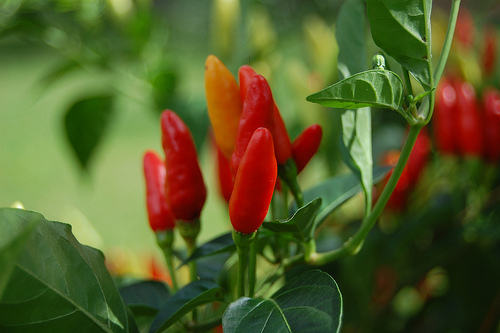Siling labuyo (Capsicum frutescens) has the potential to reduce the risk of cancer, cardiovascular diseases, cataract, and macular degeneration. This was stressed by Dr. Evelyn B. Rodriguez, professor from the Institute of Chemistry at the University of the Los Baños (UPLB) in a seminar on indigenous plants for health and wellness at the Bureau of Agricultural Research (BAR) during its 19th National Research Symposium and in celebration of the 8th National Agriculture and Fisheries R&D Week.

Also known as the chili pepper, siling labuyo is among the indigenous plants that the Department of Agriculture (DA) promotes through the Indigenous Plants for Health and Wellness RDE Program” of BAR. The said program aims to promote and highlight the importance of indigenous plants and its products.
The fruit of siling-labuyo is a popularly used as a spicy and chili condiment while its leaves are usually consumed as vegetables.
In medicinal terms, the labuyo fruit was earlier utilized as an herbal plant to ease arthritis and rheumatism. Likewsie, the labuyo is an effective cure for dyspepsia, flatulence, and toothache.
“Phytochemicals are what people need to stay healthy,” Dr. Rodriguez stressed in her presentation.
Phytochemicals are chemical compounds that are abundant in fruits, vegetables and other plant species. These naturally-occurring compounds which act as anti-oxidants capable of metabolizing free-radicals in the body that can cause cell death.
In chili pepper, carotenoids and phenolic acids are the phytochemicals that can be derived from its leaves and fruits.
Based on the studies conducted by the team of Dr. Rodriguez, the anti-oxidant activity of siling labuyo extracts (300ppm) in terms of free radical scavenging activity is 60.1%. Meanwhile, phenolic content of fruit and leaves of labuyo are 3536mg/Kg and 839mg/Kg fresh sample, respectively.
Dr. Roriguez encouraged eating a variety of fruits and vegetables to acquire the phytochemicals present in them along with its promising health and wellness benefits.
Moreover, Dr. Rodriguez pointed that more studies should be done on siling labuyo and with other indigenous plants like malunggay. The potential disease-preventive mechanisms of pyhytochemicals in fruits, vegetables and their constituents are not limited to antioxidant activity only. The phytochemicals can also act in the modulation of detoxification enzymes, stimulation of the immune system, alteration of cholesterol mechanism, and blood pressure reduction.
